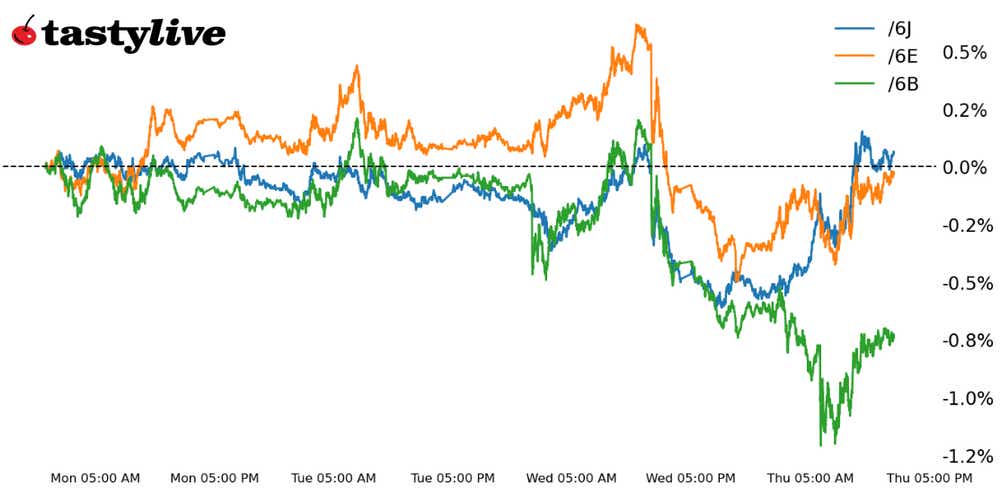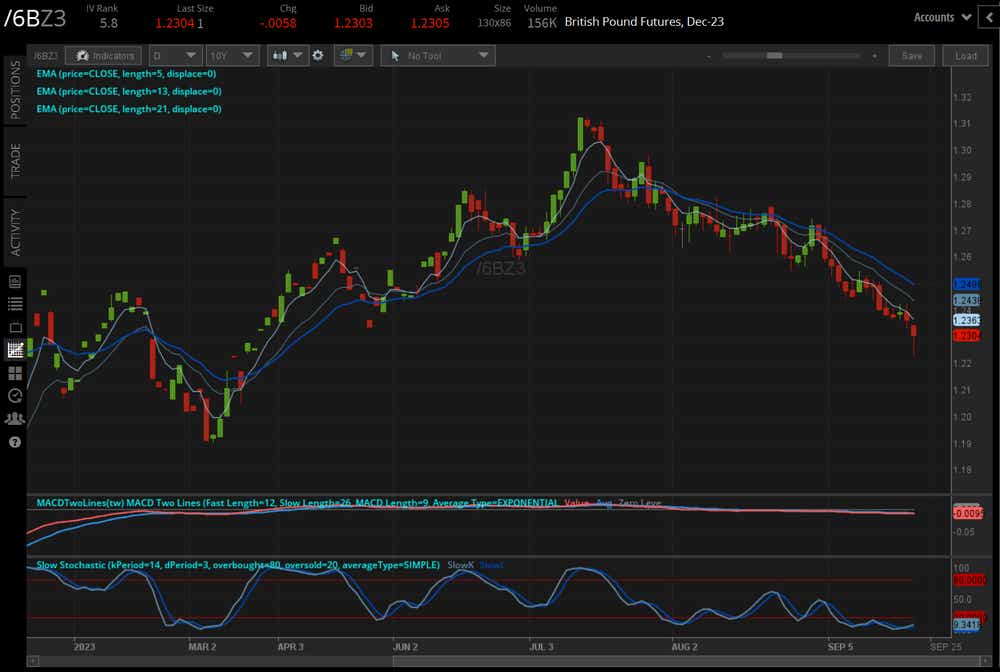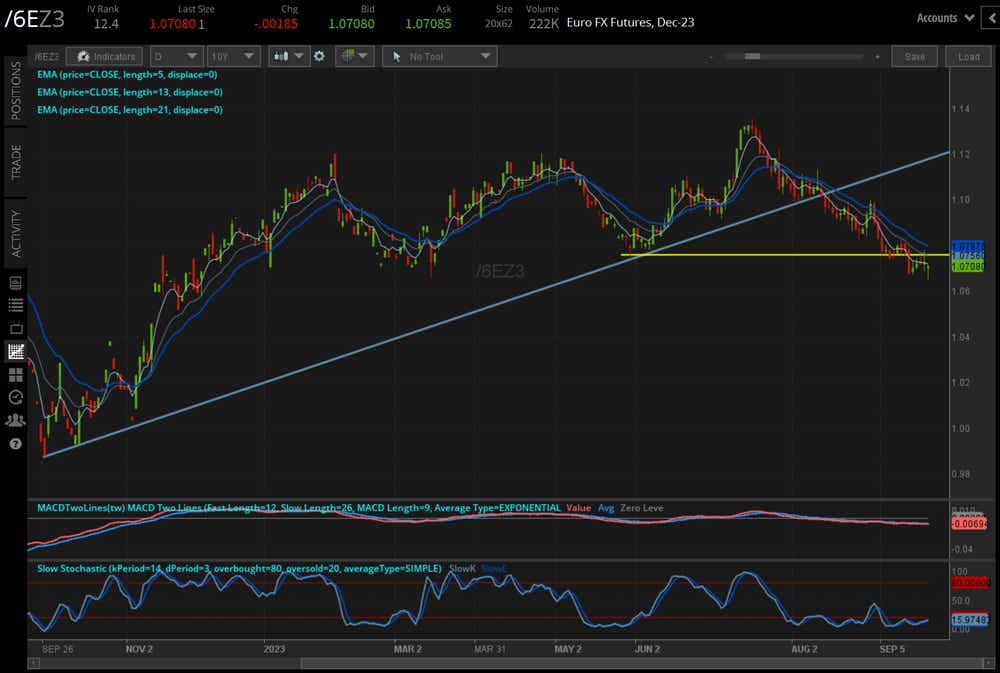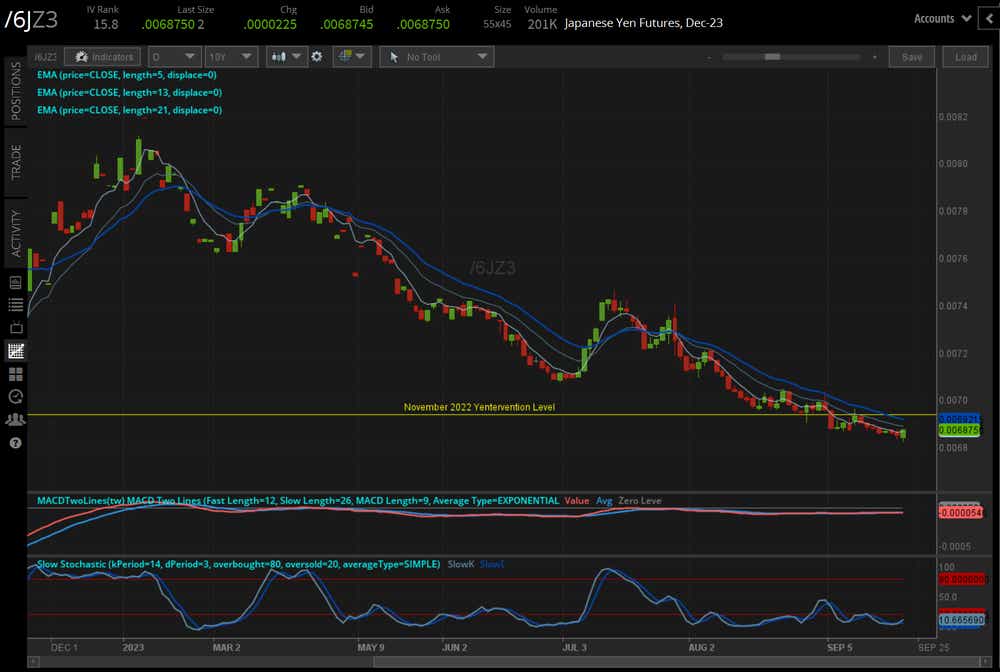U.S. Dollar Strength Holds, but Cracks Showing

U.S. Dollar Strength Holds, but Cracks Showing
Dollar Index (DXY) up 1.60% for the month to date
- U.S. Treasury yields continue to surge, helping keep the greenback on strong footing.
- The Fed may not raise rates in November for a variety of reasons, but a December hike still can’t be ruled out.
- It’s difficult to foresee a meaningful U.S. dollar pullback until Fed hike odds breakdown or U.S. Treasury yields relent.

The Federal Reserve kept rates on hold like many other major central banks. Despite that, the U.S. dollar continues to hold onto its gains accumulated thus far in September.
Suggesting that there is still one more rate hike in 2023 and two fewer rate cuts in 2024, the Federal Open Market Committee (FOMC) helped the greenback avoid the pullback that was taking shape this week.
While U.S. dollar strength remains, in large part due to the Bank of England surprising markets with no hike today, the other side of the coin is that U.S. Treasury yields extended to fresh cycle highs. But cracks are starting to show. The two-year note yield reversed all its gains on the day, and the 2s10s spread narrowed by 10-bps to -69-bps. The exit from inversion territory, whenever that may occur, is a strong recession signal, which begets a more meaningful pullback in U.S. Treasury yields down the line.
For now, however, the technical damage has accumulated against the British pound (/6BZ3), the euro (/6EZ3), and the Japanese yen (/6JZ3), the last of which is effectively relying on a surprise from the Bank of Japan (in signaling an exit from its extraordinary easing measures) or an intervention from the Japanese Ministry of Finance for a meaningful turnaround.
/6B British pound technical analysis: daily chart (December 2022 to September 2023)

The British Pound hit a fresh monthly low in trading today, dropping to its lowest level since late-April int eh process. The momentum profile is increasingly bearish in recent days. /6BZ3 remains below the daily 5-, 13-, and 21- exponential moving average (EMA) envelope, which is in bearish sequential order. The moving average convergence divergence (MACD) is trending lower below its signal line. Slow stochastics are holding in oversold territory. As noted last week, “the June low at 1.2314 is initial support, but a break below would open up a path to and through 1.2000 in the coming months.” A deeper setback still can’t be dismissed.
/6E euro technical analysis: daily chart (September 2022 to September 2023)

/6E reached a fresh September low today, dropping to its lowest level since Nov. 30, 2022. The uptrend from the September 2022, November 2022, and May 2023 uptrend remains broken, and a previously observed descending triangle pattern has broken out to the downside. /6EZ3 remains below its daily EMA envelope (which is in bearish sequential order), MACD is trending below its signal line, and Slow Stochastics are holding in oversold territory. Until the downtrend from the July and August swing highs breaks (above 1.0900), /6EZ3 remains mired in a bear market.
/6J Japanese yen technical analysis: daily chart (November 2022 to September 2023)

/6JZ3 is the most interest rate sensitive major currency, and yet, even as U.S. Treasury yields have hit fresh highs, /6JZ3 is the only major FX future in positive territory today. /6JZ3 hasn’t seen significant weakness evolve beyond the November 2022 Yentervention level. This could be due to concerns that the Japanese Ministry of Finance could intervene. Nothing has changed: “among all USD-based currency pairs, /6J remains the most dangerous; shorting near the yearly lows and the Yentervention level is akin to picking up pennies in front of a steamroller.”
Christopher Vecchio, CFA, tastylive’s head of futures and forex, has been trading for nearly 20 years. He has consulted with multinational firms on FX hedging and lectured at Duke Law School on FX derivatives. Vecchio searches for high-convexity opportunities at the crossroads of macroeconomics and global politics. He hosts Futures Power Hour Monday-Friday and Let Me Explain on Tuesdays, and co-hosts Overtime, Monday-Thursday. @cvecchiofx
For live daily programming, market news and commentary, visit tastylive or the YouTube channels tastylive (for options traders), and tastyliveTrending for stocks, futures, forex & macro.
Trade with a better broker, open a tastytrade account today. tastylive, Inc. and tastytrade, Inc. are separate but affiliated companies.
Options involve risk and are not suitable for all investors. Please read Characteristics and Risks of Standardized Options before deciding to invest in options.
tastylive content is created, produced, and provided solely by tastylive, Inc. (“tastylive”) and is for informational and educational purposes only. It is not, nor is it intended to be, trading or investment advice or a recommendation that any security, futures contract, digital asset, other product, transaction, or investment strategy is suitable for any person. Trading securities, futures products, and digital assets involve risk and may result in a loss greater than the original amount invested. tastylive, through its content, financial programming or otherwise, does not provide investment or financial advice or make investment recommendations. Investment information provided may not be appropriate for all investors and is provided without respect to individual investor financial sophistication, financial situation, investing time horizon or risk tolerance. tastylive is not in the business of transacting securities trades, nor does it direct client commodity accounts or give commodity trading advice tailored to any particular client’s situation or investment objectives. Supporting documentation for any claims (including claims made on behalf of options programs), comparisons, statistics, or other technical data, if applicable, will be supplied upon request. tastylive is not a licensed financial adviser, registered investment adviser, or a registered broker-dealer. Options, futures, and futures options are not suitable for all investors. Prior to trading securities, options, futures, or futures options, please read the applicable risk disclosures, including, but not limited to, the Characteristics and Risks of Standardized Options Disclosure and the Futures and Exchange-Traded Options Risk Disclosure found on tastytrade.com/disclosures.
tastytrade, Inc. ("tastytrade”) is a registered broker-dealer and member of FINRA, NFA, and SIPC. tastytrade was previously known as tastyworks, Inc. (“tastyworks”). tastytrade offers self-directed brokerage accounts to its customers. tastytrade does not give financial or trading advice, nor does it make investment recommendations. You alone are responsible for making your investment and trading decisions and for evaluating the merits and risks associated with the use of tastytrade’s systems, services or products. tastytrade is a wholly-owned subsidiary of tastylive, Inc.
tastytrade has entered into a Marketing Agreement with tastylive (“Marketing Agent”) whereby tastytrade pays compensation to Marketing Agent to recommend tastytrade’s brokerage services. The existence of this Marketing Agreement should not be deemed as an endorsement or recommendation of Marketing Agent by tastytrade. tastytrade and Marketing Agent are separate entities with their own products and services. tastylive is the parent company of tastytrade.
tastyfx, LLC (“tastyfx”) is a Commodity Futures Trading Commission (“CFTC”) registered Retail Foreign Exchange Dealer (RFED) and Introducing Broker (IB) and Forex Dealer Member (FDM) of the National Futures Association (“NFA”) (NFA ID 0509630). Leveraged trading in foreign currency or off-exchange products on margin carries significant risk and may not be suitable for all investors. We advise you to carefully consider whether trading is appropriate for you based on your personal circumstances as you may lose more than you invest.
tastycrypto is provided solely by tasty Software Solutions, LLC. tasty Software Solutions, LLC is a separate but affiliate company of tastylive, Inc. Neither tastylive nor any of its affiliates are responsible for the products or services provided by tasty Software Solutions, LLC. Cryptocurrency trading is not suitable for all investors due to the number of risks involved. The value of any cryptocurrency, including digital assets pegged to fiat currency, commodities, or any other asset, may go to zero.
© copyright 2013 - 2025 tastylive, Inc. All Rights Reserved. Applicable portions of the Terms of Use on tastylive.com apply. Reproduction, adaptation, distribution, public display, exhibition for profit, or storage in any electronic storage media in whole or in part is prohibited under penalty of law, provided that you may download tastylive’s podcasts as necessary to view for personal use. tastylive was previously known as tastytrade, Inc. tastylive is a trademark/servicemark owned by tastylive, Inc.